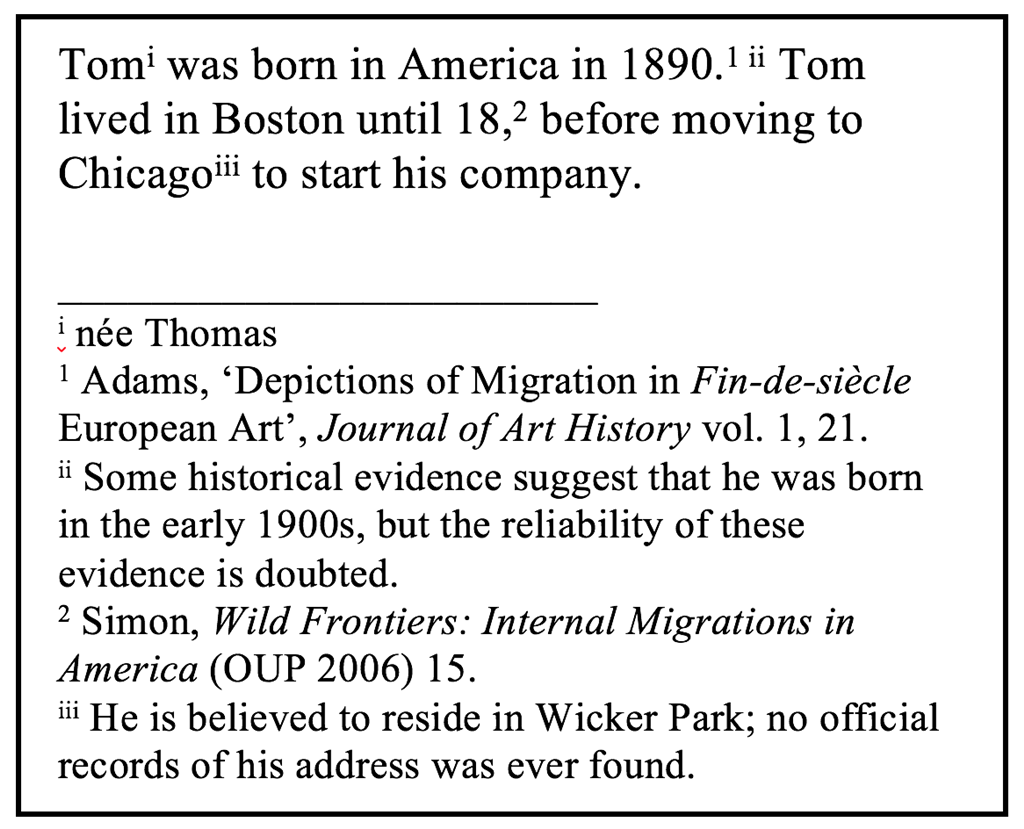

More generally, the phrase vide supra or v.s., often enclosed in parentheses, is used simply to refer the reader to preceding text. The use of supra should be done with care and only when the user fully understands its usage as it could be very confusing to readers if not used appropriately.

In this example, the second citation refers the reader to page 862 in the journal in which the article by Legatzke appears. A footnote is a note at the bottom of a page in a book which provides more detailed information about something that is mentioned on that page. If the page number is the same, just the abbreviation is enough. It centers on Dodong, a farmer’s son living in the Philippines. The abbreviation 'ibid.' stands for the Latin word ibidem, which means 'in the same place.' You may use 'ibid.' in a footnote when the source youre citing is the same as the footnote right before it, and thus avoid writing out the citation information again. Legatzke, Note, The Equitable Recoupment Doctrine in United States v. Footnote to Youth is a short story written by Filipino author Jos Garca Villa, first published in The Frontier in January 1932. The term should not be used when the preceding footnote includes more than one source. In a post to social media the union said members were arguing against 'wage theft' and. (the abbreviation for ibidem, meaning in the same place) refers to the work cited in the preceding footnote or to the preceding work within the same footnote. Supra can also be used to provide a short form citation to an earlier (but not immediately preceding) authority. Thousands of protesters marched through the Brisbane CBD, pushing for the abolition of a Fair Work Ombadsman. Or for text in that note: See supra text accompanying note 3.

For example, an author wanting to refer to a source in their third footnote would cite: See supra note 3. Supra (Latin for "above") is an academic and legal citation signal used when a writer desires to refer a reader to an earlier-cited authority.


 0 kommentar(er)
0 kommentar(er)
